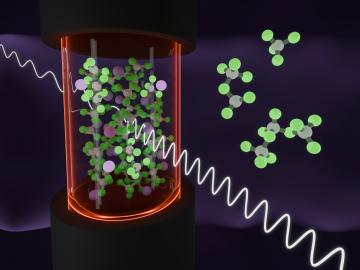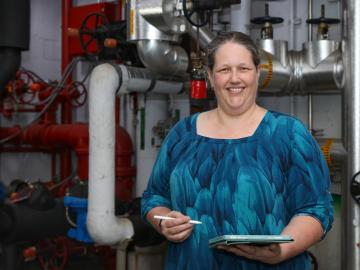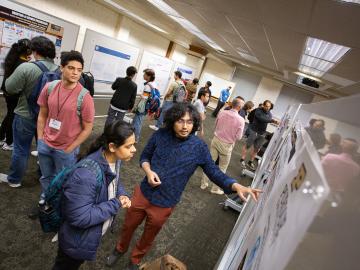
Filter News
Area of Research
News Topics
- (-) Energy Storage (15)
- (-) Frontier (21)
- (-) Grid (16)
- (-) Isotopes (17)
- (-) Microscopy (4)
- (-) Nuclear Energy (15)
- (-) Quantum Science (22)
- (-) Space Exploration (3)
- 3-D Printing/Advanced Manufacturing (30)
- Advanced Reactors (5)
- Artificial Intelligence (45)
- Big Data (28)
- Bioenergy (16)
- Biology (22)
- Biomedical (13)
- Biotechnology (10)
- Buildings (29)
- Chemical Sciences (30)
- Clean Water (6)
- Composites (11)
- Computer Science (46)
- Critical Materials (7)
- Education (2)
- Emergency (3)
- Environment (38)
- Exascale Computing (25)
- Fossil Energy (4)
- Fusion (12)
- High-Performance Computing (45)
- Hydropower (1)
- ITER (2)
- Machine Learning (23)
- Materials (24)
- Materials Science (26)
- Mathematics (7)
- Microelectronics (2)
- Molten Salt (1)
- Nanotechnology (2)
- National Security (34)
- Neutron Science (23)
- Partnerships (29)
- Physics (9)
- Polymers (5)
- Quantum Computing (20)
- Security (8)
- Simulation (24)
- Statistics (3)
- Summit (14)
- Transportation (15)
Media Contacts

Andrew Conant from ORNL's nuclear nonproliferation division is collaborating with national laboratories to analyze isotopes generated in nuclear reactors. This research aims to glean insights into the operations and objectives of these reactors. ORNL, renowned for its leadership in nuclear research, maintains its legacy by promoting the peaceful utilization of nuclear energy worldwide.

ORNL researchers completed successful testing of a gallium nitride transistor for use in more accurate sensors operating near the core of a nuclear reactor. This is an important technical advance particularly for monitoring new, compact.

Researchers used quantum simulations to obtain new insights into the nature of neutrinos — the mysterious subatomic particles that abound throughout the universe — and their role in the deaths of massive stars.

Leadership Tennessee has named Clarice Phelps to its 2024–2025 Signature Program Class XI to collaborate with professionals statewide to address Tennessee’s most serious issues.
Close on the heels of its fourth summer school, the Quantum Science Center, or QSC, hosted its second in-person all-hands meeting in early May. More than 150 scientists, engineers and support staff traveled from 17 institutions to review the QSC’s progress, examine existing priorities and brainstorm new short- and long-term research endeavors.

An Oak Ridge National Laboratory team revealed how chemical species form in a highly reactive molten salt mixture of aluminum chloride and potassium chloride by unraveling vibrational signatures and observing ion exchanges.

Sara Martinez ensures the safety and longevity of aging structures at Oak Ridge National Laboratory, employing her engineering expertise to protect against natural disasters and extend the lifespan of critical facilities.

Phani Ratna Vanamali Marthi, an R&D associate in the Power Systems Resilience group at ORNL, has been elevated to the grade of senior member of the Institute of Electrical and Electronics Engineers, the world’s largest technical professional

Purdue University hosted more than 100 attendees at the fourth annual Quantum Science Center summer school. Students and early-career members of the QSC —headquartered at ORNL — participated in lectures, hands-on workshops, poster sessions and panel discussions alongside colleagues from other DOE National Quantum Information Science Research Centers.

Early career scientist Frankie White's was part of two major isotope projects at the same time he was preparing to be a father. As co-lead on a team that achieved the first synthesis and characterization of a radium compound using single crystal X-ray diffraction and part of a team that characterized the properties of promethium, White reflects on the life-changing timeline at work, and at home.


